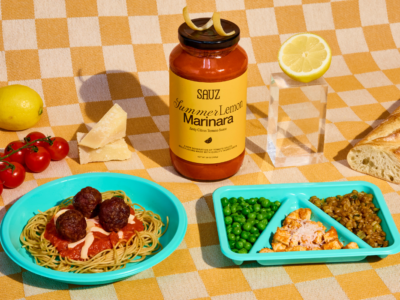It is no secret that portion sizes in our country are way over-exaggerated. Servings of foods have grown exponentially over the last few decades. So it makes sense that we, as parents, often think that our toddlers and young children need to eat much more than they actually do.
In general, healthy toddlers tend to know their hunger and fullness quite well and eat as much or as little as they need at each meal. You’ve probably noticed your 18-month old eat virtually nothing at some meals and then multiple adult-sized food portions at other meals. Their appetites fluctuate from meal to meal, and that is normal! They also might not be in the mood to eat for a variety of reasons–teething, overtired, distracted, the list goes on. This is also normal behavior, and they will likely just eat more at their next meal or snack. If parents are serving balanced, nutritious food in a low-pressure environment, kids tend to meet all their nutrition needs. Keep in mind, no two children’s nutritional needs will be exactly the same, and each kid’s needs change as they grow.
According to the American Academy of Pediatrics, we should aim to provide our toddlers (think age 1ish to 3ish) with the following per day: 2-3 age-appropriate servings each of fruits and vegetables, 6-11 servings of grains, 2 servings of proteins, and 2-3 servings of dairy foods. For our toddlers under 2, also make sure to include plenty of healthy fat sources (like nut butters, avocado, and olive oil) for their rapidly developing brains. Now, of course there will be some days where we only have fruit and don’t serve many veggies, or days where our kids eat very little of everything we offer, and that’s fine! It is never a good idea to look at our kids’ intake under a microscope–we should use a wider lens and think about their overall intake over a week or a month. Their nutrition is so much more than a single day or meal. Also keep in mind that these are just guidelines; some families eat a little differently than what is listed here, and that is perfectly fine.
But the question remains of what constitutes an age-appropriate portion or serving size. A simple rule of thumb I like to follow is to serve 1-2 tablespoons of each food per year of age during a meal. So, for a one-year-old, that will mean starting with about 1/4 of a piece of bread, 1-2 tablespoons of scrambled egg, and 1-2 tablespoons of yogurt at breakfast. That’s it!
For a 4 or 5-year-old, we can serve a full slice of bread, 1/4-1/2 cup of eggs, and a full 4oz yogurt. Are you surprised by how small the “official” portion sizes for young children are? If you are, it is likely because we have become so accustomed to seeing distorted portion sizes in our society–even for kids!
Now, does this mean the few tablespoons of each food is all they should have? Absolutely not! One benefit of serving less is that it gives our kids the opportunity to ask for more (or not–and that’s also ok!). This helps them better tune into their true hunger and fullness levels. If we overload their plates with food, this might inadvertently send the message that we expect them to eat that much, putting unwanted pressure on our kiddos. A plate overflowing with food can be overwhelming to small children, especially if it includes a less familiar food. We always want to maintain a pressure-free meal environment, as our kids’ attitudes about food are just as important as what they are eating. Furthermore, serving smaller, more age-appropriate portion sizes can help reduce food waste during those meals where your toddler just isn’t that hungry. A win-win. At the end of the day, if a parent or caregiver knows their child routinely eats more or less of something than the standard portion, then feel free to plate that. Every kid’s grownup knows them best!
I remember back when I was a kid we sometimes had these delicious, albeit salt- and sugar-laden “TV dinners.” The plates were divided into small areas and, to their credit, had age-appropriate portions of food. Enter the modern, nutrient-dense version of our childhood TV dinners–Little Spoon Plates! I love these as a quick and easy option to serve my toddler when I get home from work at dinnertime, forget to make lunch for the next day, or just don’t feel like putting a meal together. I don’t have to worry about portioning out the “right” amount of food, or creating a nutritionally balanced meal. Each Plate includes a child-appropriate serving of protein, several servings of veggies, and you don’t need to worry about artificial sugar, preservatives or fillers. A stress-free meal for all!



